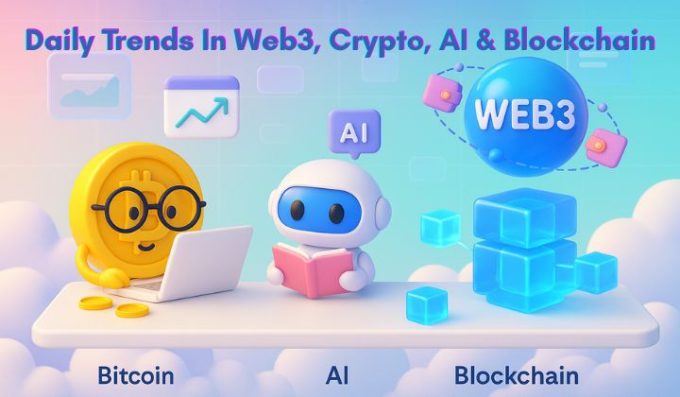Blockchain Technology Empowers Genetics
By Kapil Rajyaguru
Blockchain is the new golden child of healthcare because of the immense potential that it offers as a shared platform to decentralize health data and ensure access control, authenticity, and integrity of protected health information.
The growing need to capture, store and manage genomic data for clinical trial management, development of new drugs and therapies, and personalization of care is making genomics an apt application area for blockchain.
The health care industry has also benefited from the unique properties of cryptocurrencies for the transaction of data, including the use of unique tokens that allows for transparency, low cost, and micropayments.
Blockchain As A Solution For Cell And Gene Supply Chains
During the discovery process and through to clinical trial stages, relationships are developed with a variety of entities, including material suppliers, clinical sites, transportation providers, contract research and production companies, and third-party logistics partners. This community fits the requirements for a private blockchain:
- Building upon existing relationships and using digital data that is already generated through transportation, manufacturing, and financial transactions, the blockchain platform can be leveraged to create a secure virtual ledger.
- Additional security can be achieved through encryption technologies, in addition to the fact that each transaction cannot be changed once recorded in the blockchain.
- Serialization at the unit and item level is already required and this detail, through association with the transactional data, provides the “digital DNA” that is unique for each series of events, across the product and shipment life cycle.
- Packaging components, including specialized packaging for environmental monitoring and control, contribute to the data, providing digital records related to the location, state, and control across the chain of custody.
Blockchain is a solution that has already been successfully adopted in a variety of industries, such as food and automotive.
The implementation of a permissioned blockchain framework will enable the secure sharing of real-time data, providing visibility to products as they move through each of the links in the chain. Data shared and made available will include time and temperature data, providing an immutable audit trail at the item and product levels. This provides a permanent record at the participant and transaction level that can be integrated with and enhance capabilities of related supply chain and serialization and traceability solutions already in place.
Barriers To Adoption Of Blockchain
As with the introduction of any new technology, there will be constraints and issues that need to be addressed. One of the key challenges is to achieve consensus among key stakeholders in terms of the process models that will be supported by the blockchain platform. This requires trust and open sharing of data between all participants in the chain of custody, from acquisition of materials through production, storage, and distribution.
A further challenge relates to the personal and cost data that is generated and would form part of a permanent digital record. During the process, there are transactions that are recorded in the blockchain that include data that could identify a specific patient — particularly for autologous therapies.
The information that is shared and subsequently stored in the digital ledger is immutable — it cannot be amended or deleted. This raises questions of how long personal data could be stored and if there are potential conflicts with the General Data Protection Regulation (679/2016/EU) that came into effect across the EU in May 2018.
Although encryption technologies can be integrated into the blockchain implementation, these are considerations that need to be addressed, potentially by retaining patient confidential data “off the ledger,” where it can be deleted as appropriate.
Getting Started
Participants in the supply chain for cell and gene therapies are defined early in the discovery and clinical trial phases. These participants work closely together as co-development partners (to an extent), which addresses one of the first challenges for a blockchain platform — that of trust and transparency. Another plus for cell and gene therapy is the clarity in terms of patient locations; in many cases these are aligned with the clinical sites for clinical trials and subsequent dosing regimens.
As such, some of the constraints faced by other types of supply chains are less relevant for cell and gene therapies. What remains is to focus on the sequence of activities and the participants and put this into a structured framework that can provide a blueprint for each of the blocks in the blockchain.
The first step in evaluating how blockchain can be used to monitor and manage the complexity of the supply chain for cell and gene therapies is to define the operational environment. This includes:
- The Players: Supply chain partners that contribute to and share data could be part of a blockchain implementation. The participants include, but are not limited to, healthcare providers, hospitals, transportation and logistics partners, contract research organizations, clinical trial site management, production partners, healthcare agencies, specialty distributors, and specialty pharmacies.
- The Process: It is critical to develop a unique process map for each and every unique supply chain channel. Define each of the steps that take place from beginning to end, across the specific product and shipment life cycle.
- The Technology: There are many different technologies that can be adopted when leveraging a blockchain platform. Start with what is already in place and work with current partners to establish what else is needed.
There are many steps on the road to discovering a life-changing molecule. Understanding the impact and requirements for a clearly defined supply chain strategy and implementing this into the complex environment of cell and gene therapies is not a simple task. It requires dedication and participation from all the stakeholders across the development to delivery life cycle. All the details need to be defined, simulation models developed, and risk assessed — and remediation plans put in place.
At times, it is necessary to change plans, change partners, and change direction. But the promise of medical breakthrough is irrefutable — no matter how challenging bringing these compounds to the point of patient may be.
You need to login in order to Like













